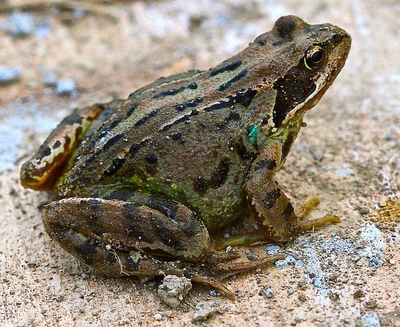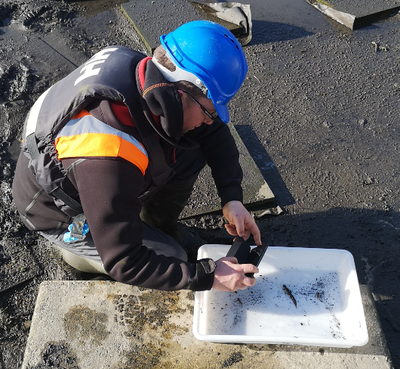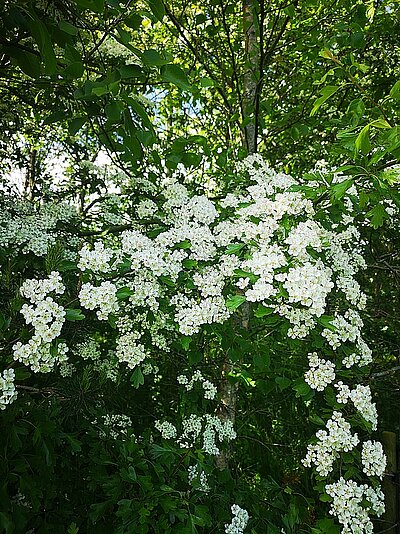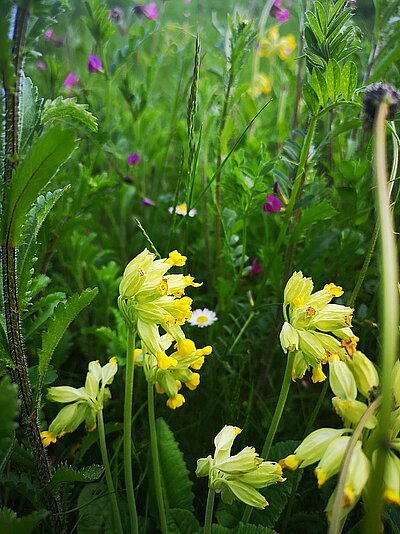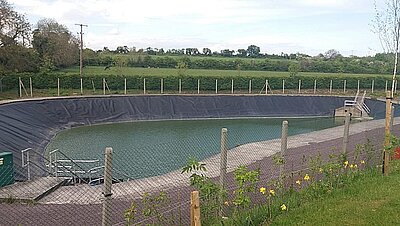The creation of new terrestrial habitats, such as a wildflower meadow, meadow grasslands, and additional treelines planted with a mixture of native broadleaved trees and Scots Pine, have led to noticeable increases in populations of native Irish mammals such as hares and foxes. The diversity of flowering plants in these areas also provide an abundant and diverse source of food and habitats for essential pollinating insects such as bumble bees, solitary bees, hoverflies, butterflies and moths. A range of birds are also inhabiting the site and are seen and heard daily. Bat boxes erected on the site were surveyed in 2015 and signs that bats are using the boxes were identified. The creation of a surface water retention pond has added a completely new habitat to the site, providing additional biodiversity value to the local area, by supporting a healthy breeding population of smooth newts and common frogs.
Looking into the newts and frogs in a little more detail, we have approximately 50 individuals newts and 30 common frogs in the pond (as of March 2020), which indicate a very healthy population. The pond had developed an overgrowth of duckweed algae (Lemna sp.) on the water surface. Algae are a group of simple plantlike organisms and are often present in ponds. As part of a balanced aquatic ecology, they are not harmful. However, an overgrowth of algae decreases the aesthetic value of a pond, and as algae dies and decomposes, the amount of dissolved oxygen in the water decreases and the total organic carbon (TOC) increases. In 2019 and 2020, freshwater ecologists were contracted to establish an newt and frog friendly pond cleaning method statement and management plan to remove the algae and silt. A licence from the National Parks and Wildlife Services (NPWS) was required in order to conduct works in the pond, and an Ecological Clerk of Works was present on site when works were undertaken. As it is reported in scientific literature that adult newts and frogs hibernate on land over winter, the pond cleaning occurred in the winter months so as not to affect the amphibians.
On November 2019 and March 2020, the freshwater ecologists surveyed the pond to ensure that all of the newts and frogs have left for the winter. The survey in November found that the amphibians had left the pond so it was safe for the cleaning works to take place. Three inflatable pools were set up at the side of the pond and were filled with pondweed from the pond, which the newts use to attach their eggs to. The initial survey in March also indicated that there were no newts and frogs in the pond, so the cleaning works commenced. However, once the pond was drained down, it was quickly discovered that adult newts and frogs had buried themselves in the sediment of the pond and had hibernated over winter in it. The ecologists worked diligently to remove all of the newts and frogs that were encountered before dredging the sediment, and put them into the inflatable pools. The ecologists were surprised to find so many individual frogs and newts in the pond, as it is not reported in scientific literature that the species’ bury themselves in the sediment and hibernate over winter under the water. As amphibians can live on both water and land, any newts that were moved into the pools, will have been able to move back into the pond by themselves.
Some of the benefits of the biodiversity on site include carbon offsetting through the absorption on CO2 from atmosphere and increase in O2, phyllo-remediation of air pollutants by plants in the surrounding landscape and the intrinsic value by creating a positive atmosphere on site with staff and visitors.
